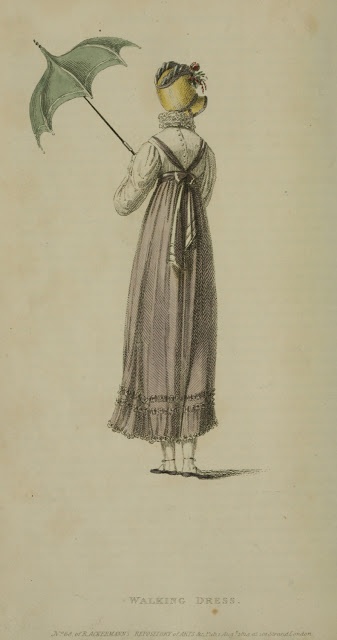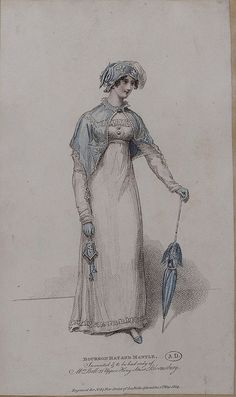The
facts of Lady Caroline Lamb’s life are presented in this 2004 biography from
Paul Douglass, but as an English professor (at San Jose State University),
Douglass is more interested in Lady Caroline the author than Lady Caroline,
lover of the great Romantic poet Lord Byron.
Lady Caroline Lamb
The biographical information includes information on her birth and the privileged set into which she was born. She was the only daughter of Frederick Ponsonby, Viscount Duncannon and his wife Harriet, the youngest daughter of the first Lord Spencer. The Duke of Devonshire was Lord Duncannon’s first cousin; the Duchess of Devonshire was Lady Duncannon’s sister. Because Lady Duncannon was caught up in the fast lifestyle of the Whig ladies of the era, she had several lovers, among them Richard Brinsley Sheridan, the playwright and great Whig orator. Douglass suggests the possibility that Sheridan might actually have been Lady Caroline’s father, but he also says, “Sheridan’s amazingly facile tongue, moodiness, and tendency toward self-destructive behavior all find echoes in Lady Caroline’s personality, though it is unlikely they were related by blood.”
Born November 13, 1785, Lady Caroline spent most of her early years abroad and could speak and write fluently in French and Italian. In 1793 her father succeeded, becoming Earl of Bessborough. Though she was very close to her mother, Lady Caroline — always a high-strung child — was also close to her maternal grandmother, Lady Spencer, who attempted to counteract her own daughter’s influence with piety.
William Lamb
At age nineteen, Lady Caroline married William Lamb, the second son of Lord and Lady Melbourne, though he was almost certainly sired by his mother’s lover Lord Egremont. Caro had known him all her life. He wrote that he had been in love with her for four years but could not hope for her hand until he became Lord Melbourne’s heir when his elder brother unexpectedly died. As heir, he would be a suitable match for a high-born girl like Lady Caroline. Had she not fallen in love with Lamb, she was destined to marry either her cousin who would be the sixth Duke of Devonshire or the cousin who would be the third Lord Spencer.
Though she was madly in love with Lamb before the marriage, she was extremely moody the first few weeks of her marriage. It is believed she was shocked over what went on in the bedchamber between a husband and wife. Seven months later she gave birth to a premature girl, who died shortly after her birth. The following year she gave birth to her son Augustus Lamb. She adored her infant son, but as he became older it was clear he was mentally handicapped. Douglass said Augustus was retarded, but he gives no examples and scarcely mentions Augustus after his birth. (From other sources, it appears the boy may have been autistic.) Douglass does say that Caroline insisted that the boy not be put away but always stay with her or his father.
Having befriended Byron’s publisher John Murray, Caroline read Byron’s "Childe Harold" before its publication and — instantly captivated — told Murray she had to meet Byron. (By then, Lady Caroline had already conducted at one flagrant love affair.)
Lord Byron
Her affair with Byron began the month of Childe Harold’s publication, March, 1812, and like a flame burned with torrid intensity before it was snuffed three months later. During the tempestuous days of their liaison Lady Caroline flung discretion to the wind. Small and thin, she dressed as a page and sneaked into Byron’s chambers for passionate bouts of lovemaking that may have been even too wild for Byron. At first, his passion rivaled hers, but because of the disgrace she was bringing to her husband and family and because he needed to marry an heiress, he backed away from Caro. In an effort to make her despise him, Byron told her of unpardonable acts he had committed. Douglass suggests that Byron admitted to incest with his sister Augusta Leigh and to having sex with boys. Douglass even suggests he forced anal sex on Caroline to make himself loathsome to her.
In September, her parents demanded she and her husband go to Ireland with them. Though Byron would write and inform her he no longer loved her, Caroline never could free herself of the debilitating love she felt toward him. She lost all pride. In her twisted sense of intimacy, she exchanged locks of hair with him, but she sent pubic hair.
She
never stopped writing to him, never stopped begging for meetings with him. In a
letter she wrote him two years after their affair she captures her own persona
better than any biographer: “I lov’d you as no Woman ever could love because I
am not like them — but more like a Beast who sees no crime in loving &
following its Master — you became such to me — Master of my soul more than of
anything else.”
In her obsession over Byron, she became adept not only at copying the style of his poetry but also of copying his handwriting and manner of scratching out words in his writings. She used this to forge a letter to Murray authorizing Caroline to take possession of a Byron portrait that was at Murray’s publishing office.
If she could not have Byron, she wanted his portrait – and his writings, writings, which she studied and emulated for the rest of her life. Four years after their affair she published her novel Glenarvon. Hugely popular, it went to several printings but instead of gaining the critical acclaim she so desired, its satire of her own class caused her to be ostracized.
But she would not be deterred in her obsession to be an author. She wrote lyrics, poetry, and two more novels.
Her relationship with Lord and Lady Melbourne, with whom she was forced to live, had been tenuous ever since the blatant affair with Byron and as her outrageous behavior (throwing crockery, coming to a ball dressed as Byron’s "Don Juan," shamelessly flirting with the Duke of Wellington) increased, they urged William to separate from her.
But the cuckolded William stuck by her. As she slipped into alcoholism in the 1820s he, too, began to be disgusted with her, and he made arrangements to live apart.
It was at this time the Melbourne family came to the conclusion she was insane. William would not commit her, but he did hire “keepers” for her. He never divorced her and was at her side when she died at age forty-two. Her death was brought on by her alcoholism.
In her obsession over Byron, she became adept not only at copying the style of his poetry but also of copying his handwriting and manner of scratching out words in his writings. She used this to forge a letter to Murray authorizing Caroline to take possession of a Byron portrait that was at Murray’s publishing office.
If she could not have Byron, she wanted his portrait – and his writings, writings, which she studied and emulated for the rest of her life. Four years after their affair she published her novel Glenarvon. Hugely popular, it went to several printings but instead of gaining the critical acclaim she so desired, its satire of her own class caused her to be ostracized.
But she would not be deterred in her obsession to be an author. She wrote lyrics, poetry, and two more novels.
Her relationship with Lord and Lady Melbourne, with whom she was forced to live, had been tenuous ever since the blatant affair with Byron and as her outrageous behavior (throwing crockery, coming to a ball dressed as Byron’s "Don Juan," shamelessly flirting with the Duke of Wellington) increased, they urged William to separate from her.
But the cuckolded William stuck by her. As she slipped into alcoholism in the 1820s he, too, began to be disgusted with her, and he made arrangements to live apart.
It was at this time the Melbourne family came to the conclusion she was insane. William would not commit her, but he did hire “keepers” for her. He never divorced her and was at her side when she died at age forty-two. Her death was brought on by her alcoholism.
William Lamb, Lord Melbourne (Queen Victoria's first Prime Minister)
Lady Caroline would never become Lady Melbourne. In a cruel irony of her life, William succeeded to the title and became prime minister after her death.
Lady Caroline would never become Lady Melbourne. In a cruel irony of her life, William succeeded to the title and became prime minister after her death.


















